The two floating markets in the city of Can Tho were among our favourite experiences on the Mekong River in Vietnam. Here we have collected some of our photos and a few tips for the boat trip.
Written by Mette / Photo by Martin
Translated from Danish
The sun had barely fractured the dark sky of the night as we boarded a small wooden boat a little outside the center of Can Tho. It’s a quarter to six in the morning. The brown waters of the Mekong River lazily lapped against the boat, making it hard to imagine that it had traveled 4.000 km to get here – all the way from the Tibetan highlands to southern Vietnam.
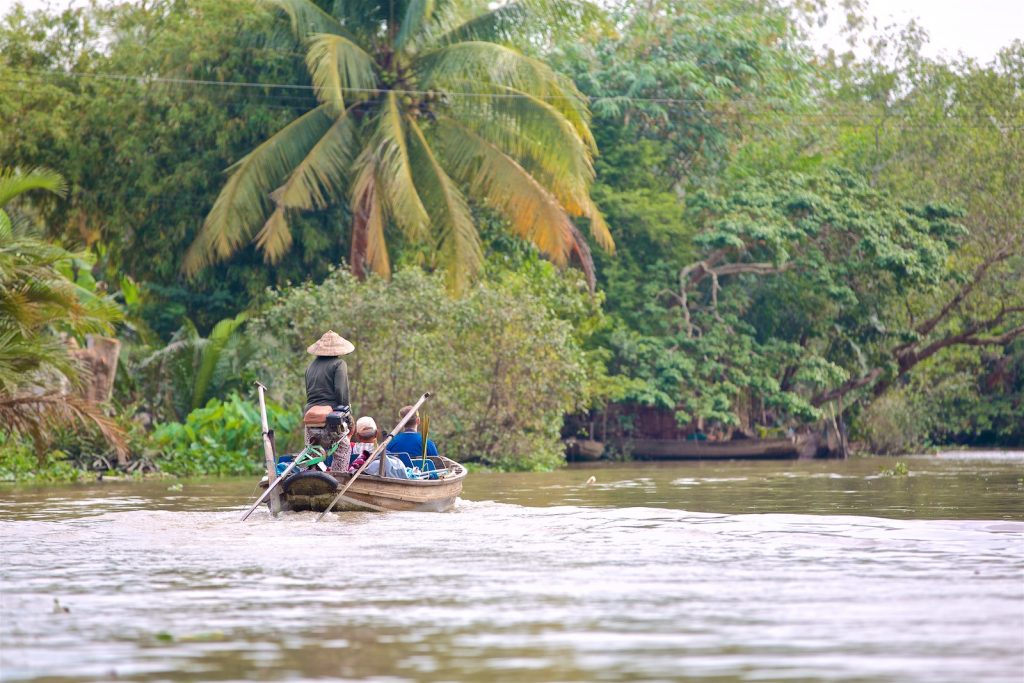
The Mekong is not a raging river in these parts, yet it supplies plenty of sustenance to the vast delta. This is where most of the country’s fruit, fish, and rice is harvested, which is why the Mekong Delta is also called Vietnam’s largest pantry.
In addition to being one of the country’s most important transport routes, the Mekong River has also been the center for the locals in generations selling and buying their fresh produce at floating markets. Today, however, there are only a few left, but at Can Tho you will find two of Vietnam’s most famous – Cai Rang and Phong Dien.
On the way to Cai Rang
Our guide first headed for the largest floating market, Cai Rang, which seemed relatively easy to find. The traffic of boats on the river revealed the direction of success. And the closer we got to the market, the more boats appeared. Although the sun had only just risen, there was already a vast activity on the river.
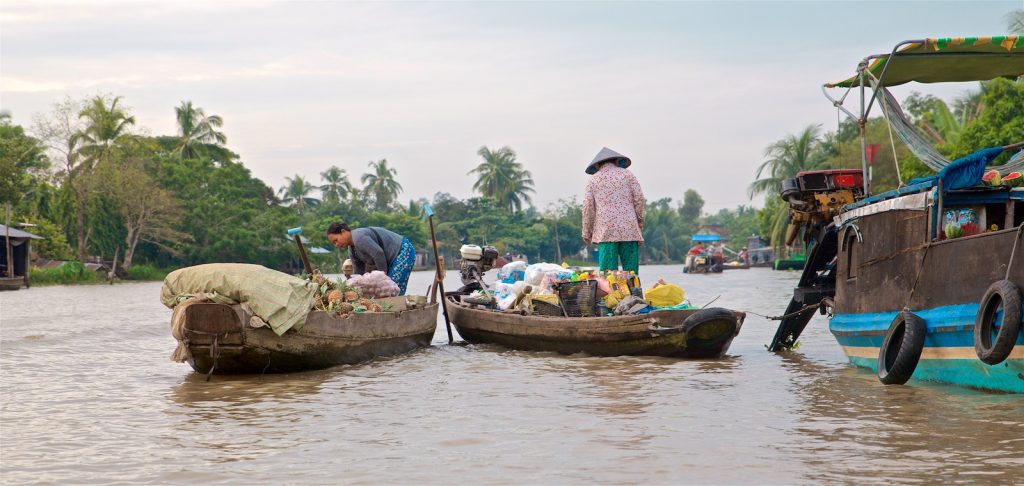
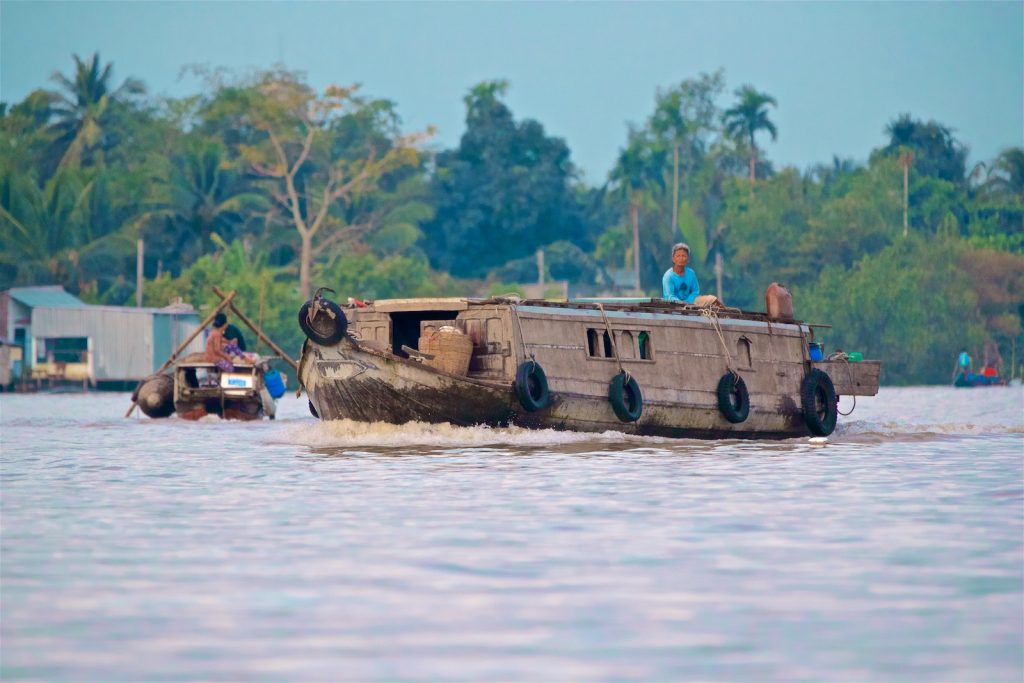
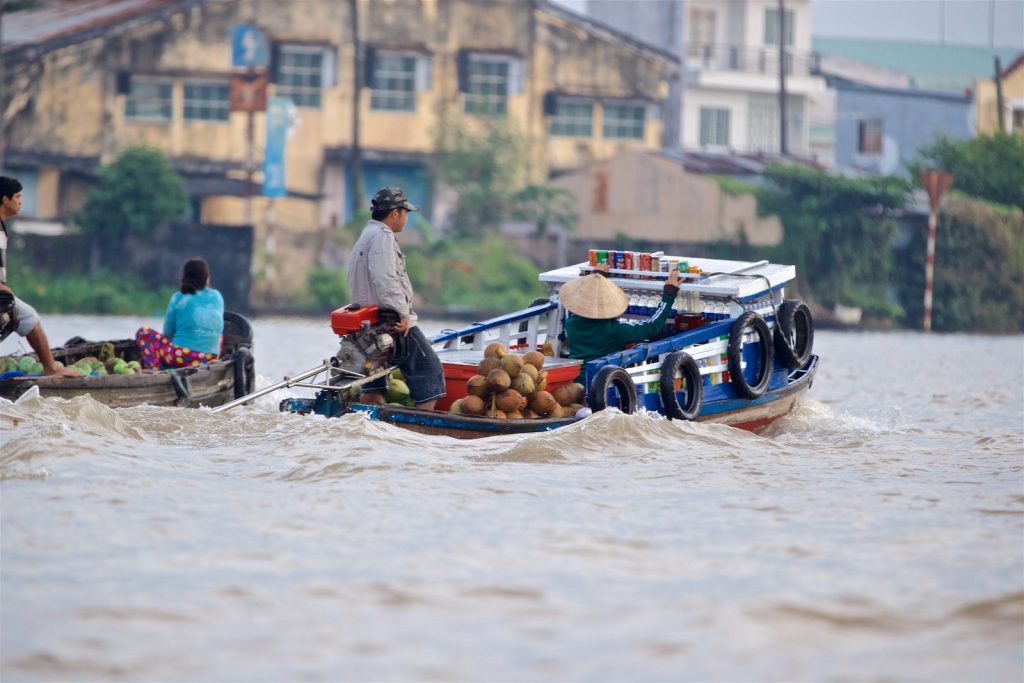
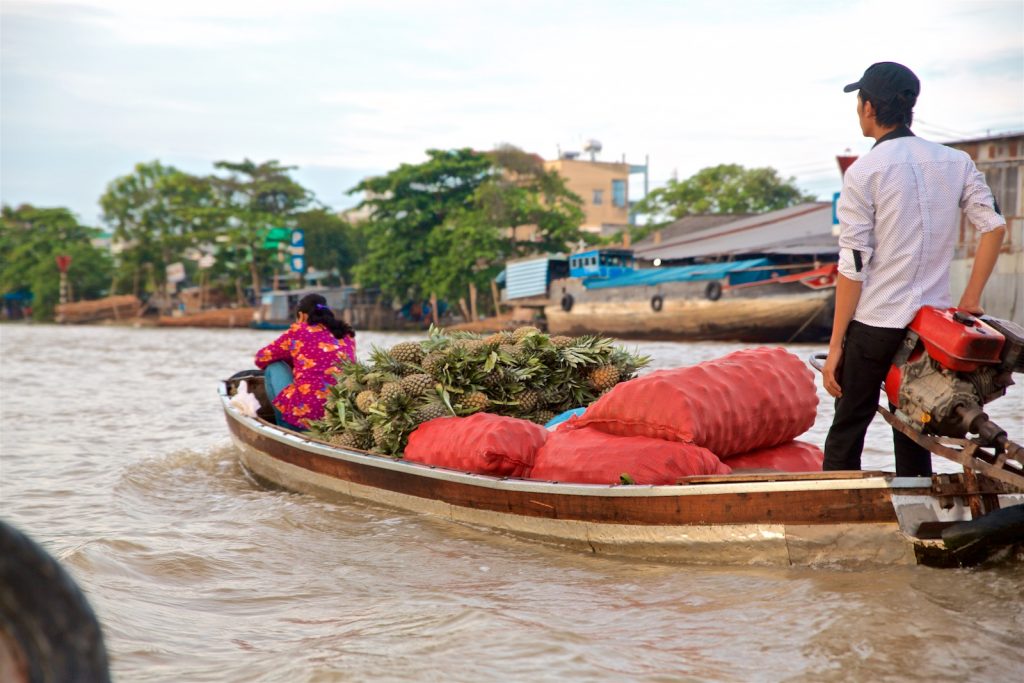
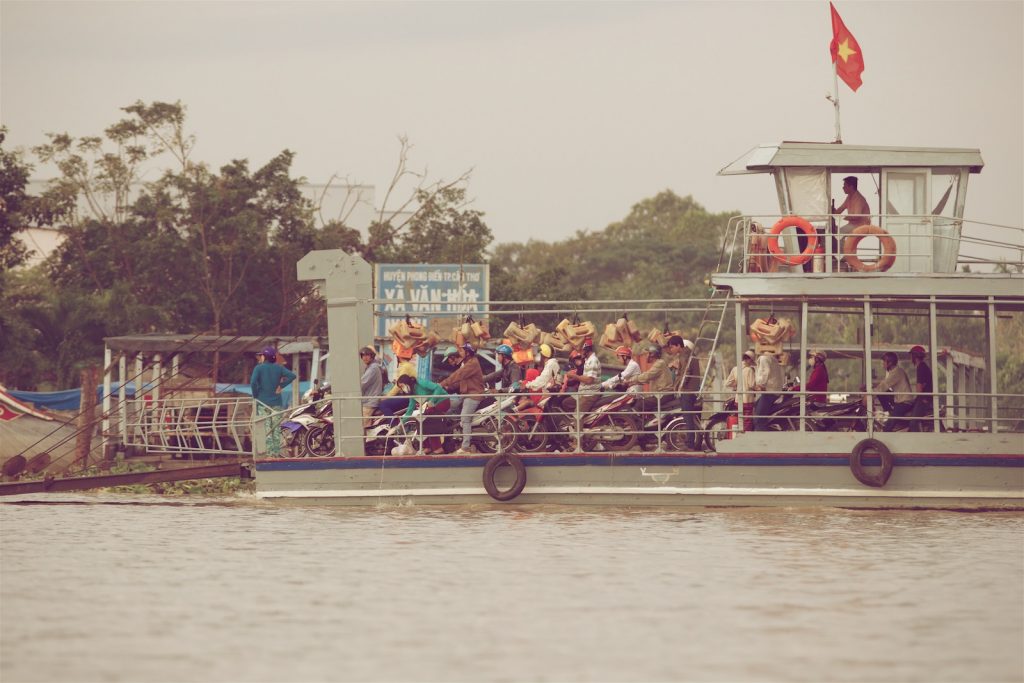
The Venice of Vietnam
After half an hour of sailing, we arrived at the floating market, Cai Rang. In the middle of the river, lots of boats clattered together and created waterways for us to sail through. The experience of sailing around between the floating market stalls stood out from all the other markets we have trotted through previously on tours in Asia. It was fascinating to sit in a rocking boat and watch the trading life from a waterway.
Large and small wooden boats advertised their cargo by hanging the goods high on a wooden pole. Everything from pineapples and watermelons to sacks of carrots and heads of cabbage was merrily traded and tossed through the air between the sailors. Modern supermarkets and shopping carts are suddenly experienced in a completely new way after sailing on the Mekong River.
Other boats served as mobile restaurants selling hot noodle soup, cold drinks, and Vietnamese coffee. They energetically buzzed around between the traders, often with the owner simply having his foot on the tiller.
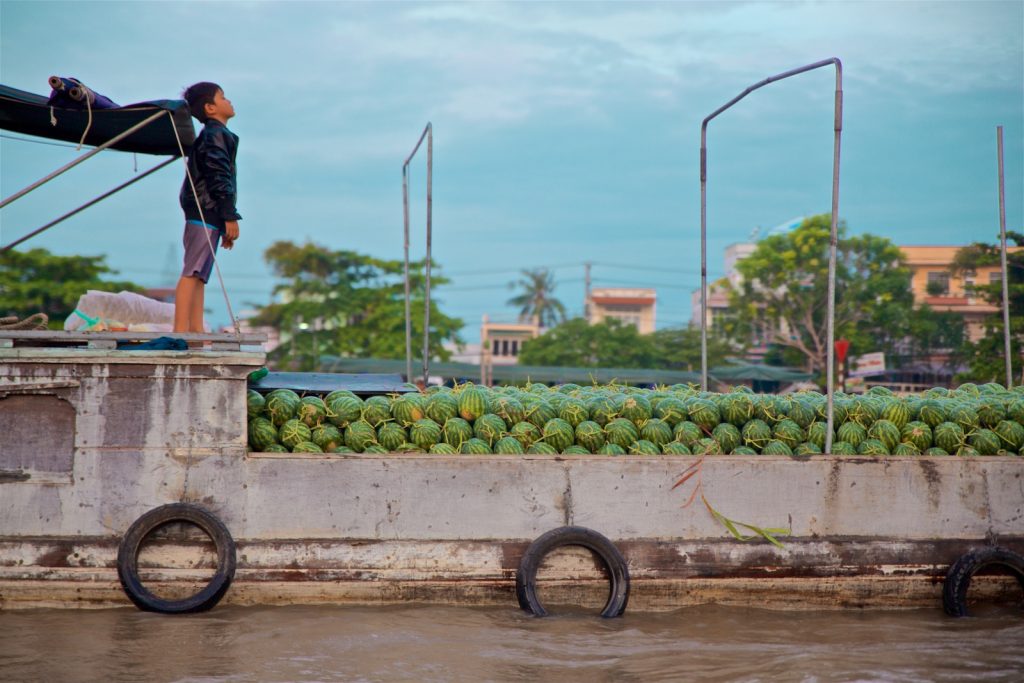
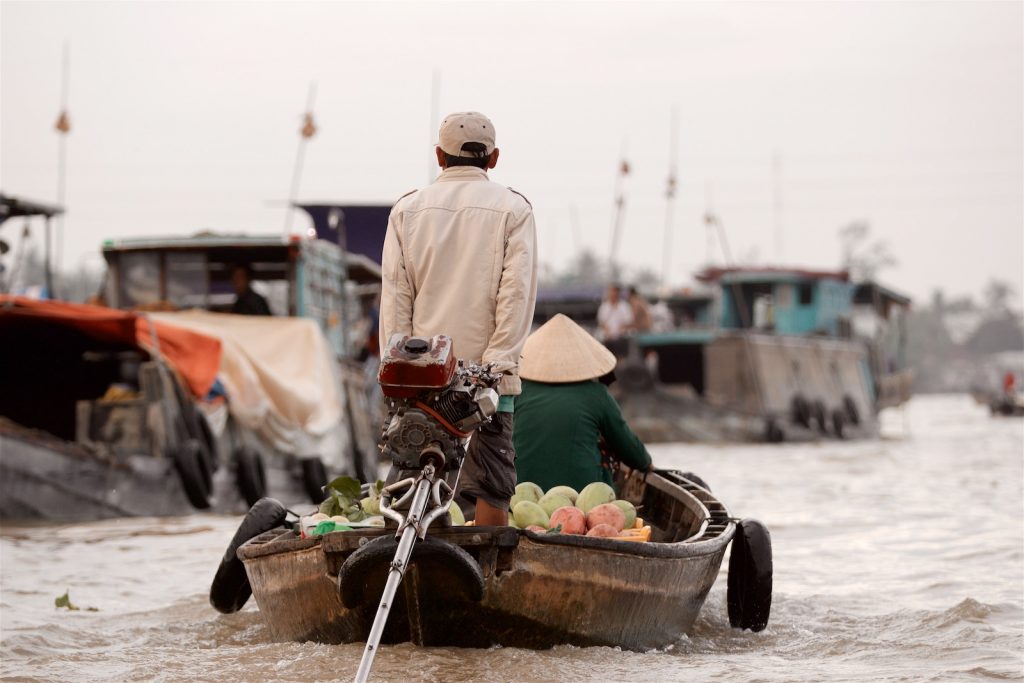
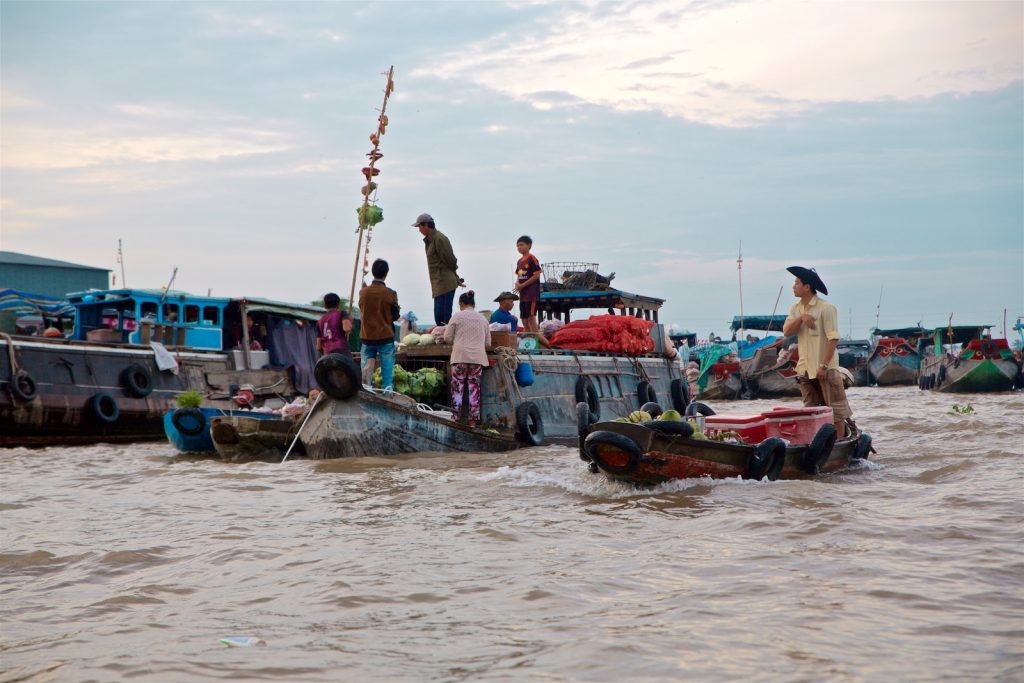
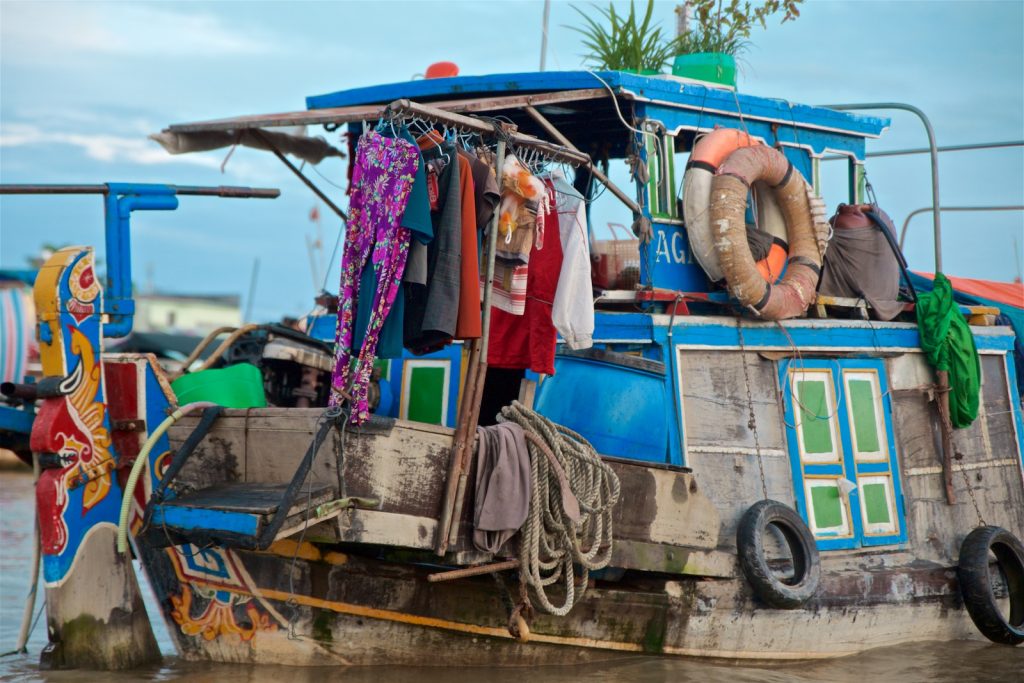
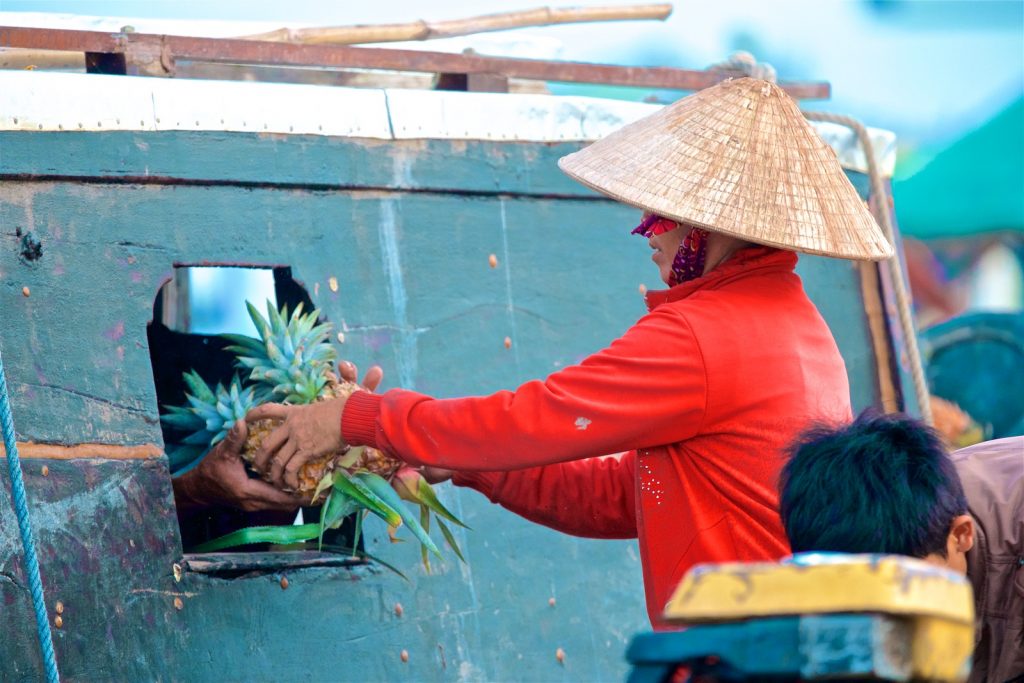
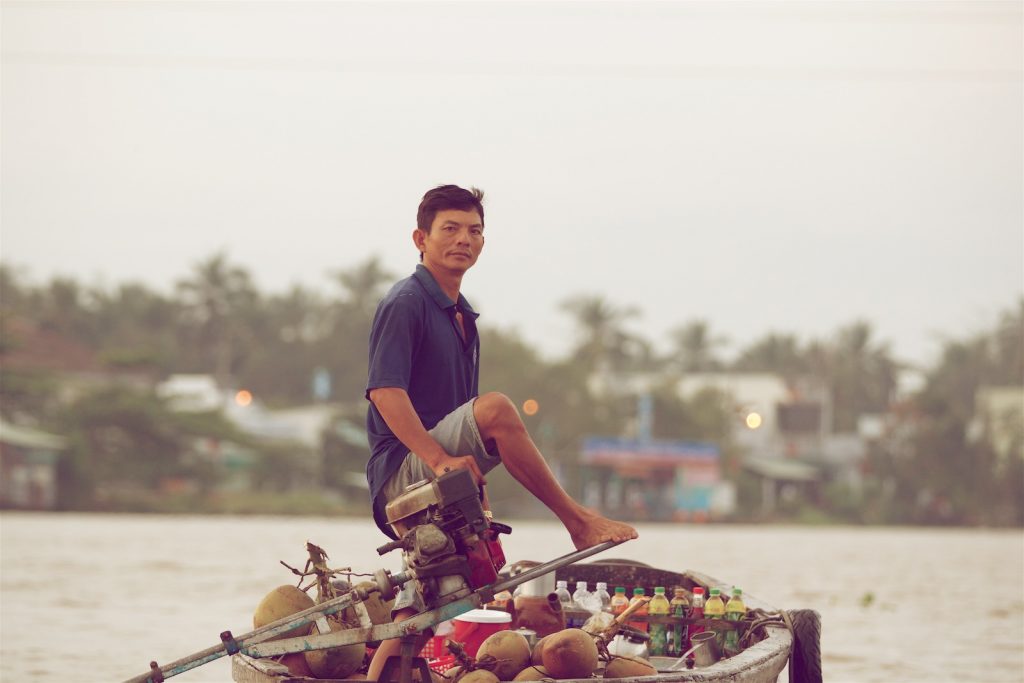
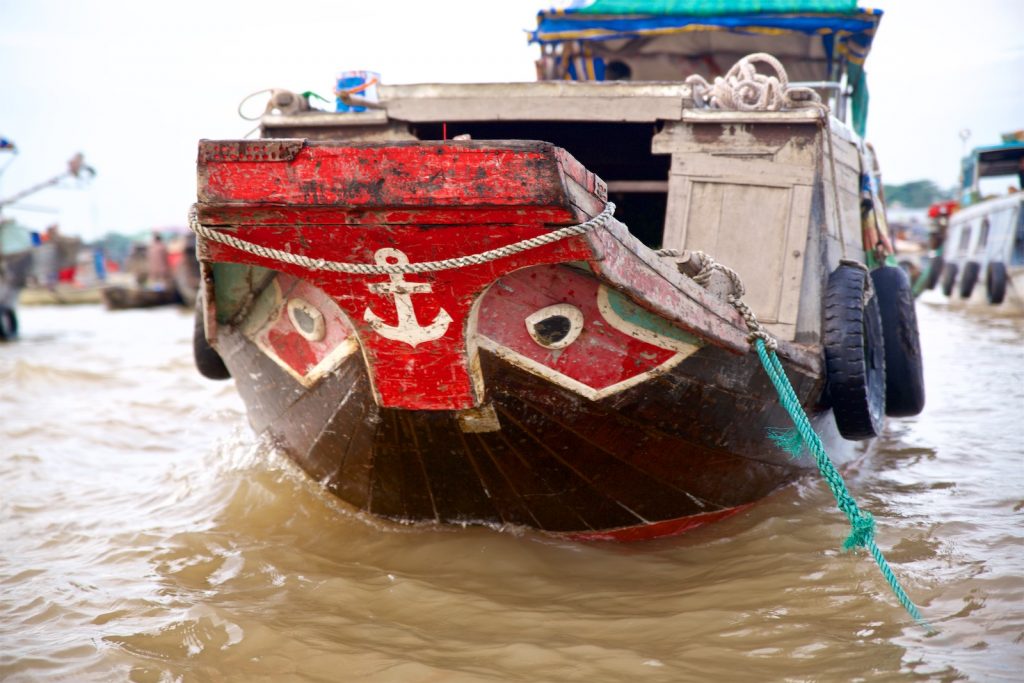
Life on the Mekong River
After circling around Cai Rang for half an hour, we sailed on to the next floating market, Phong Dien. The change of location left a small window for getting a little shuteye. But the sailing trip itself was as too interesting for closed eyes.
Small scenarios along the river piqued our curious eyes and gave a glimpse into the local life that is lived in close connection with the water. The houses are built on the edge of the river, which serves as everything from cleaning the breakfast dishes to trashcan, and parking space. There are no cars in the driveway here, but boats moored to the riverbank.
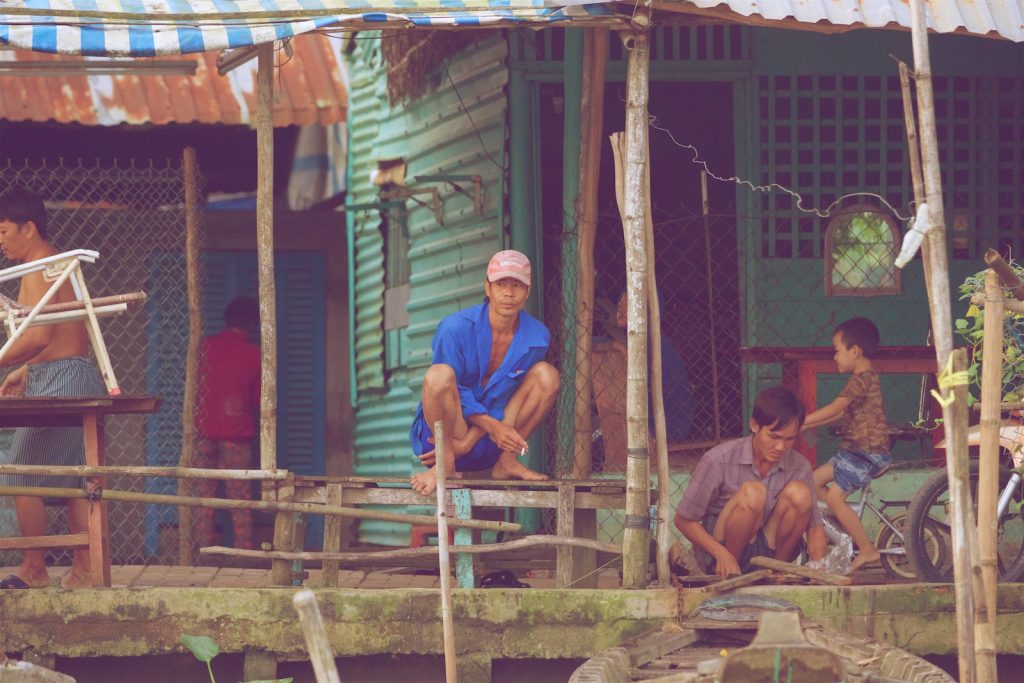
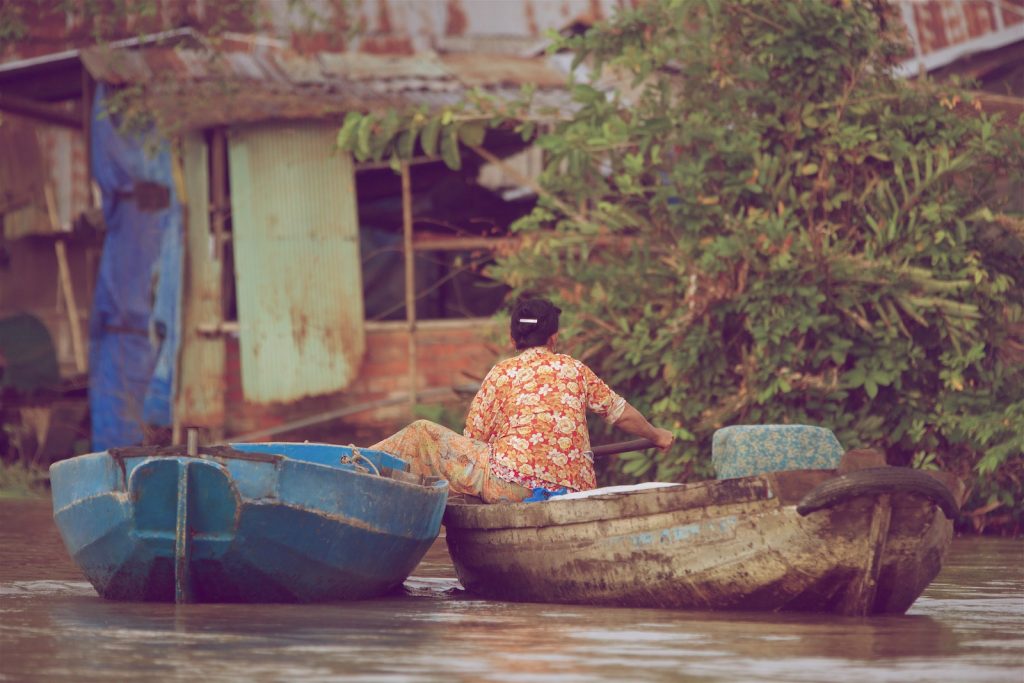
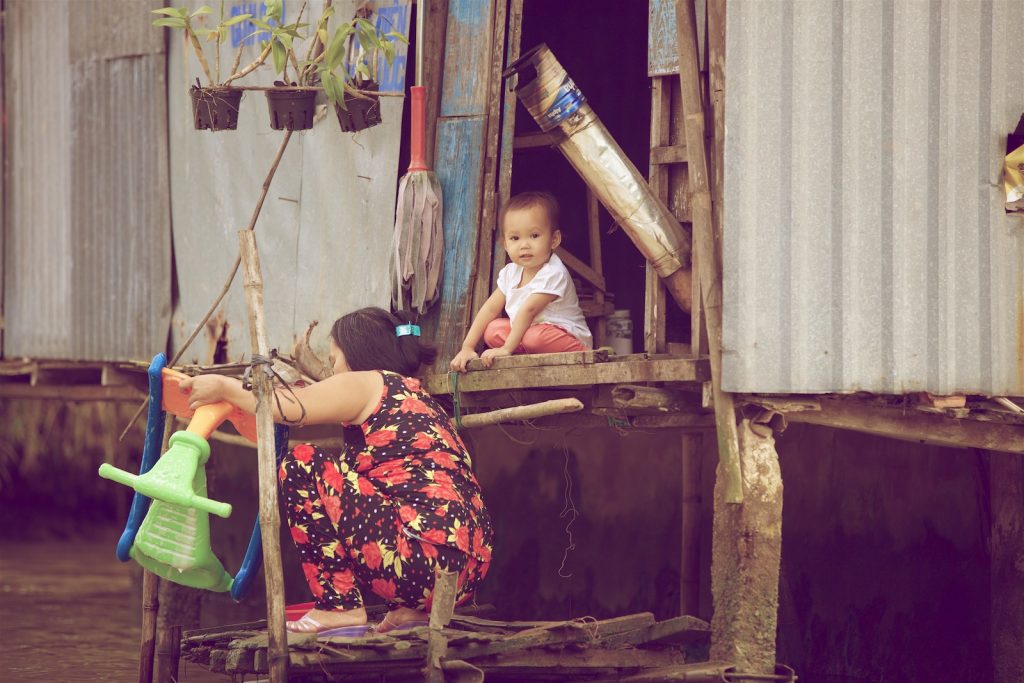
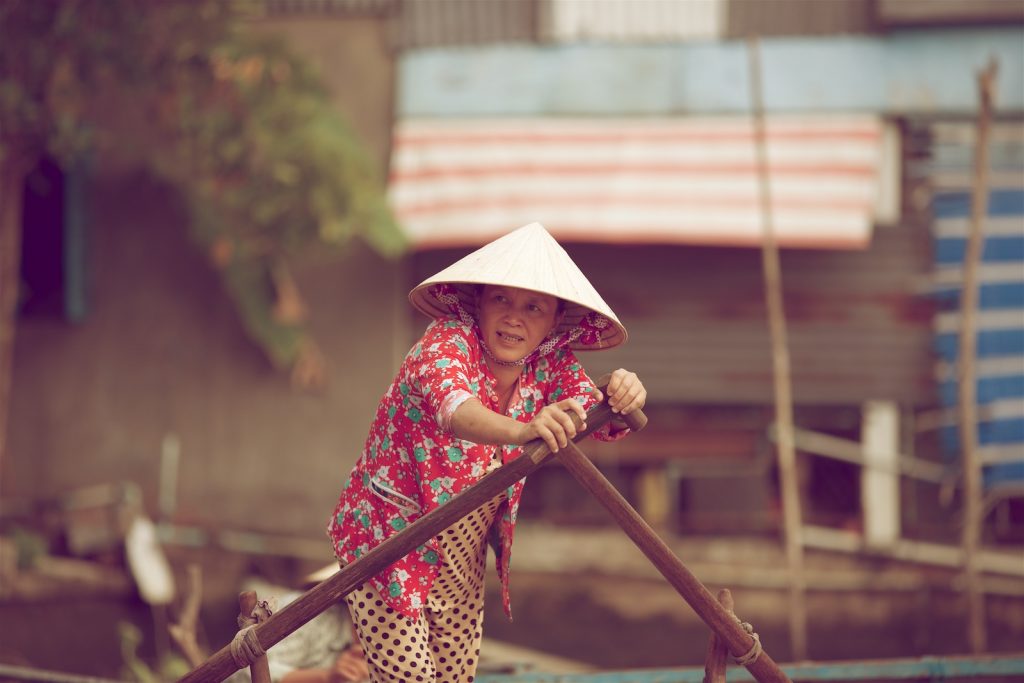
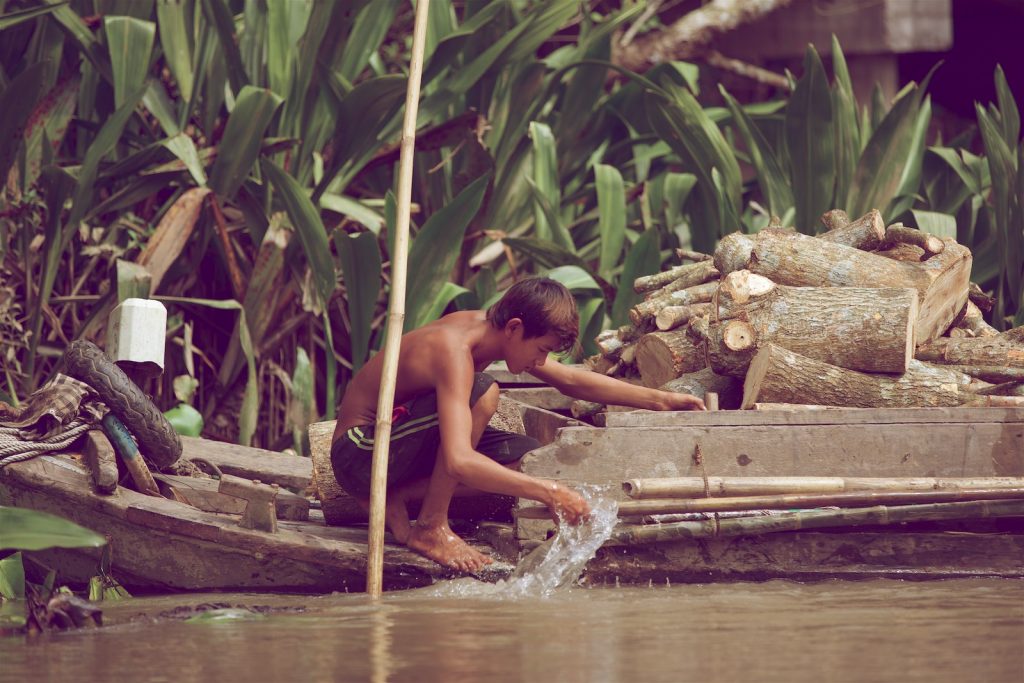
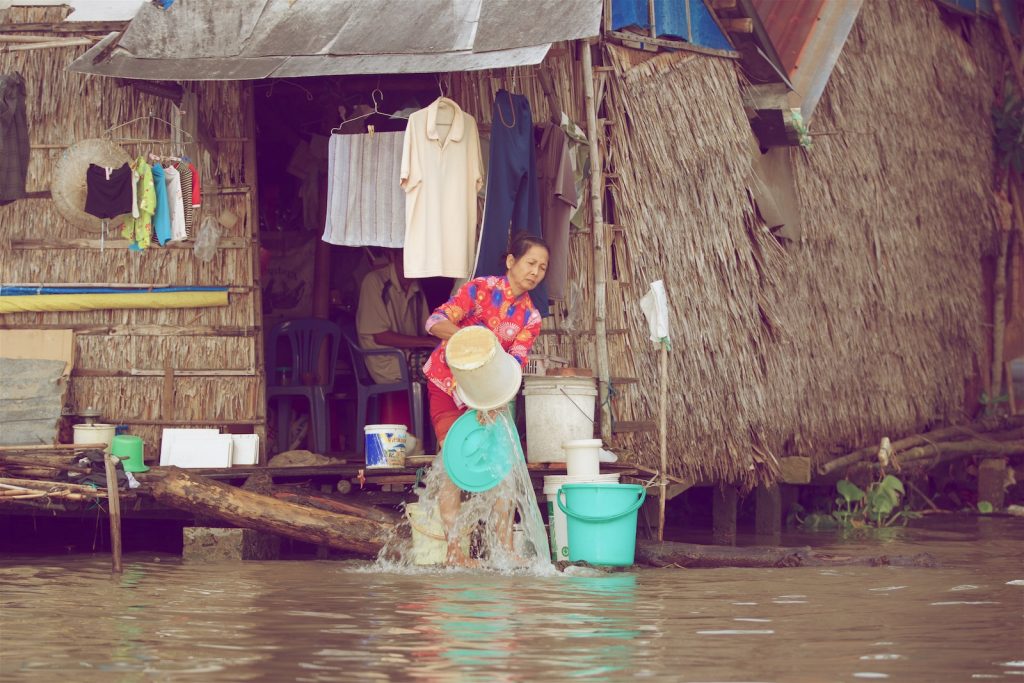
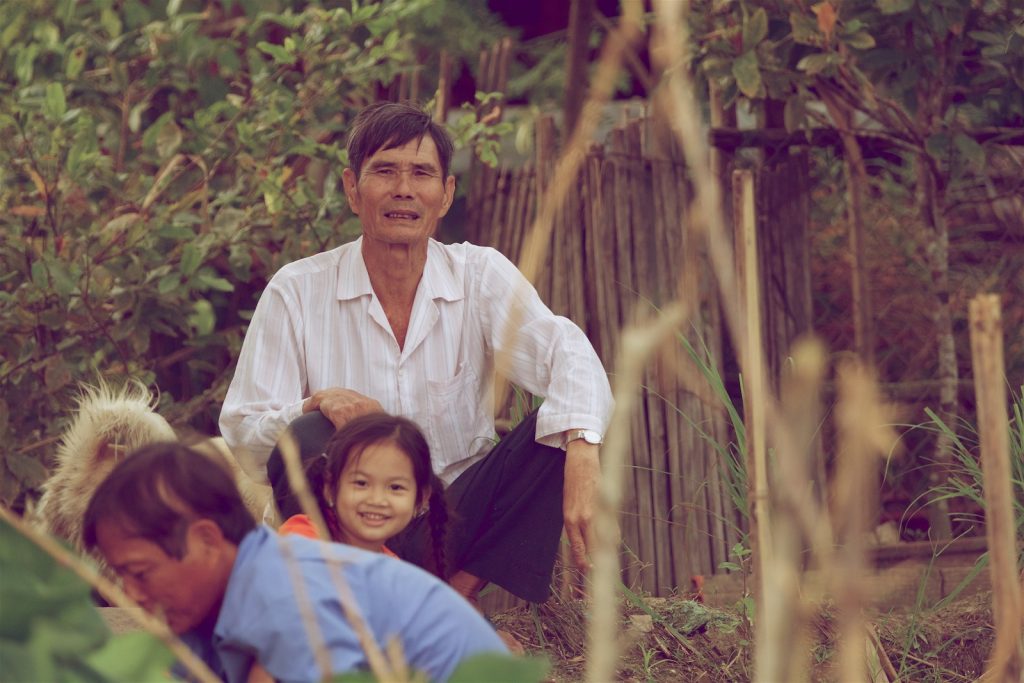
A floating private hedge
The sun had climbed a little further up in the sky when we arrived in Phong Dien. The floating market was quite a bit smaller than Cai Rang – it wasn’t much bigger than the lake in Tivoli, but about twice as full of tourists. Although it undeniably colored the experience, it was still a feast for the senses to sail around between the small boats.
The conversation went merrily between the ladies, who laughed and chatted across the railings, reminding us of neighbors of a small Danish village chatting across their private hedges. The boats abounded with fruit and vegetables, the air smelled of spices and river water, and the floating restaurants passed small bowls of food around among the many active hands.
The Mekong is truly a wonderful world of water that you cannot experience in many other places in the world. So, if you happen to be in these parts, you should definitely set aside half a day for an early morning trip around the floating markets.
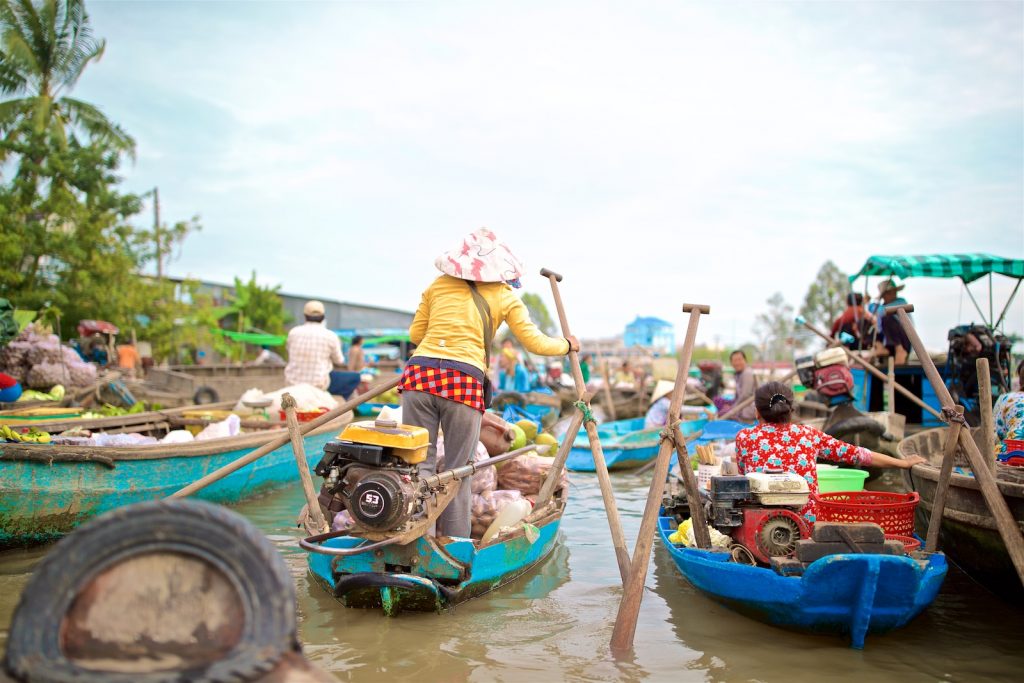
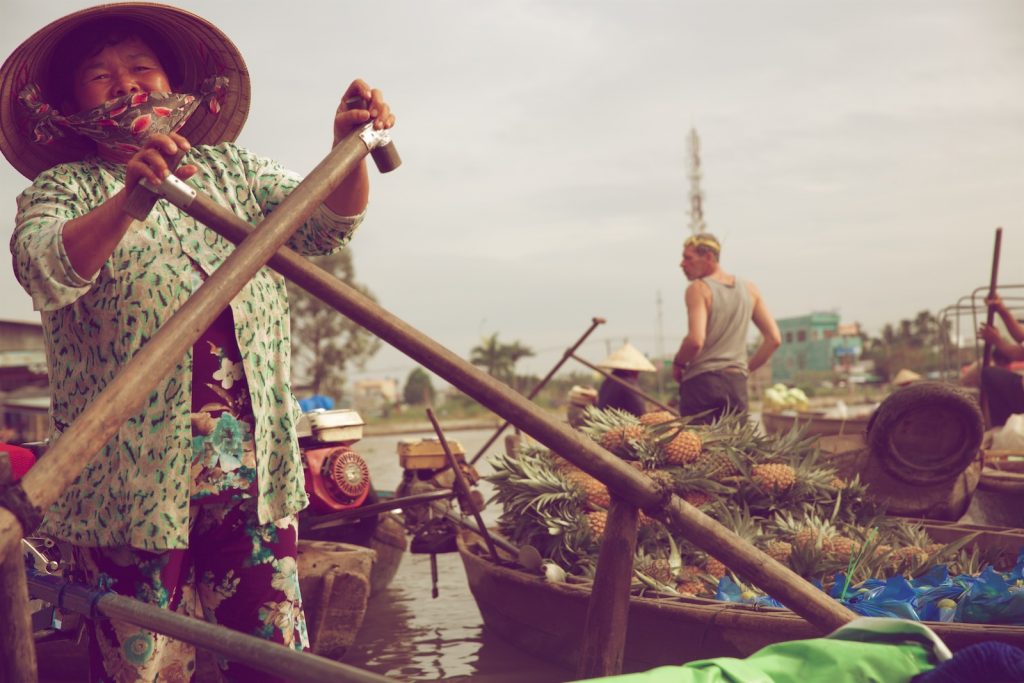
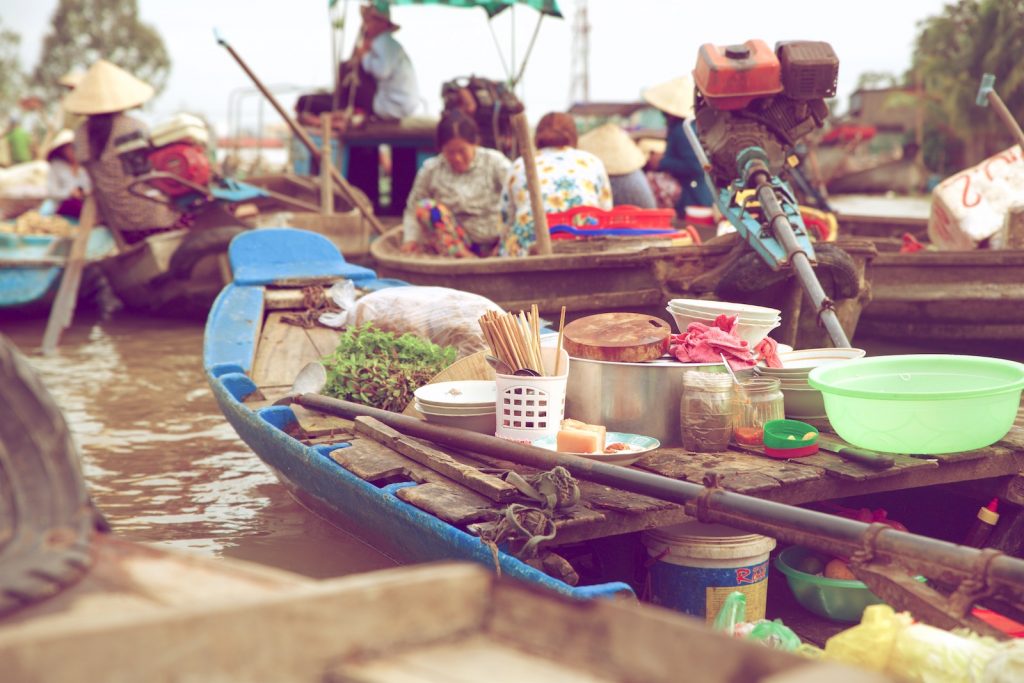
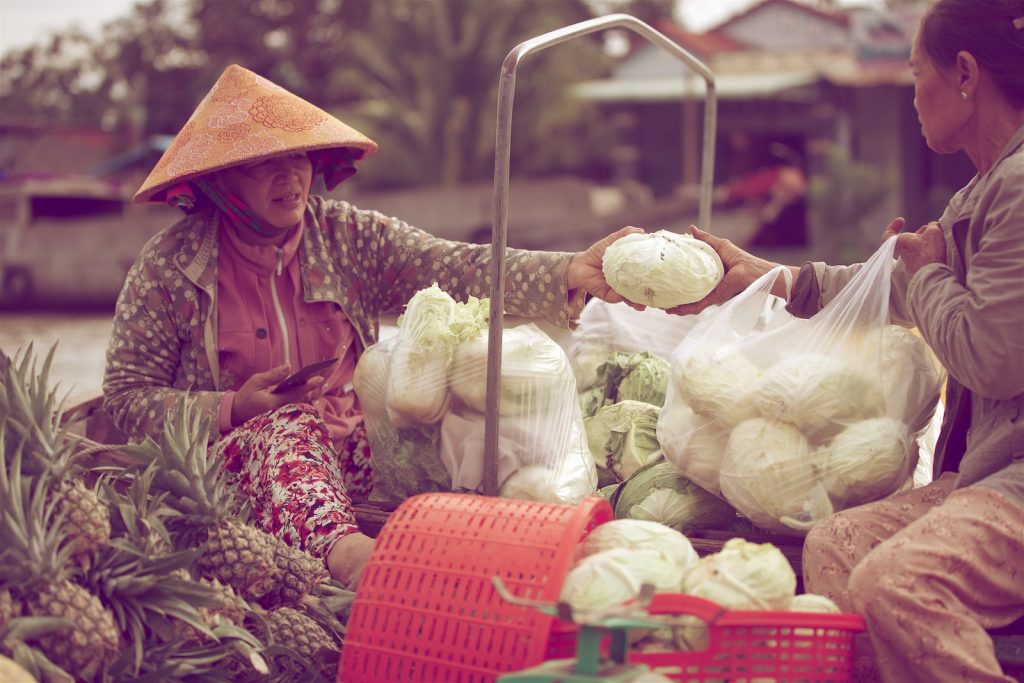
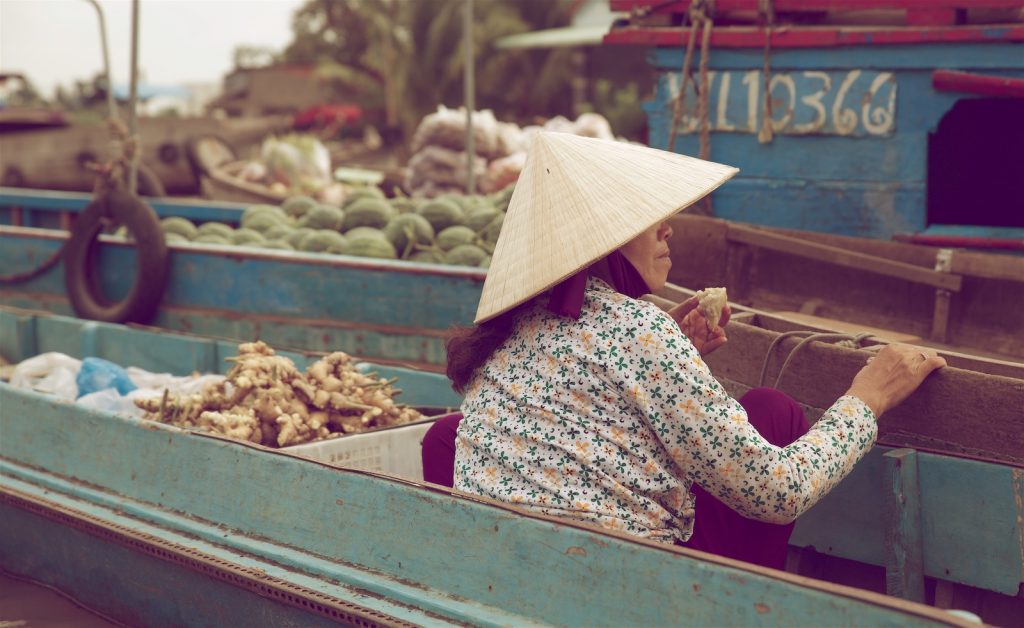
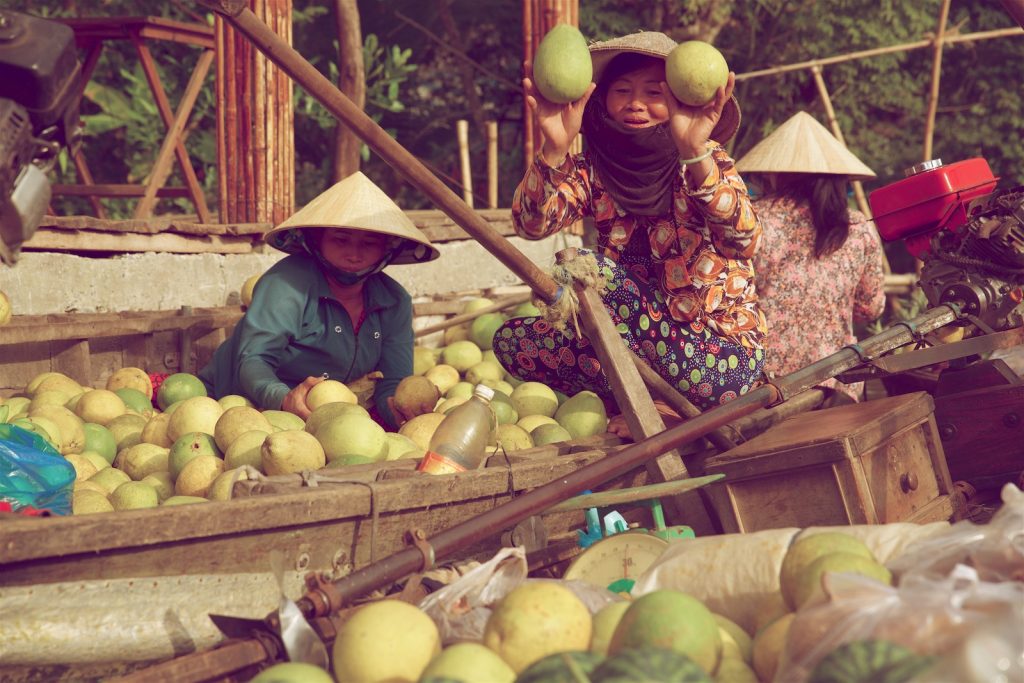
OUR TRAVEL TIPS
Where to find the floating markets
There are several floating markets in Vietnam, but the two most famous are within sailing distance of Can Tho, the largest city in the Mekong Delta. The markets are called Cai Rang and Phong Dien:
Cai Rang, which is the largest market, is located 6 km (approx. a 30-minute boat ride) from the center of Can Tho and can be experienced from both water and land. The greatest experience, however, is sailing around, feeling the commercial atmosphere on the water and watching the lively activity between the boats.
Phong Dien is a lot smaller and is further away, approx. 15 km from Can Tho. Although the experience of a floating market is somewhat more intimate here, it is obvious that most of the boats today are tourists. It steals a bit of the charm that Phong Dien is otherwise particularly known for.
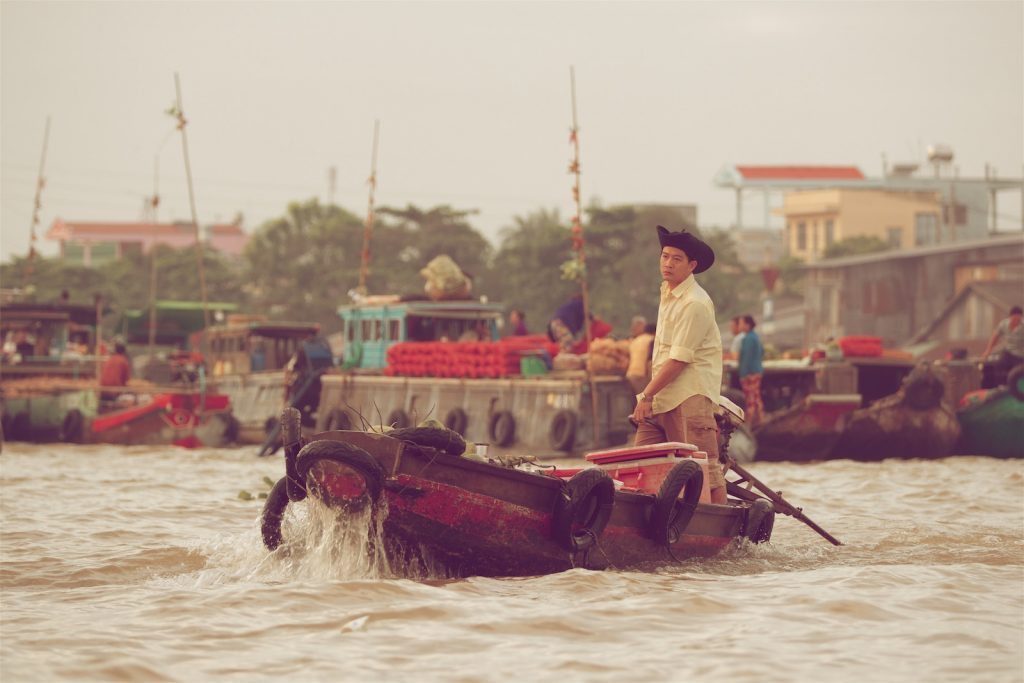
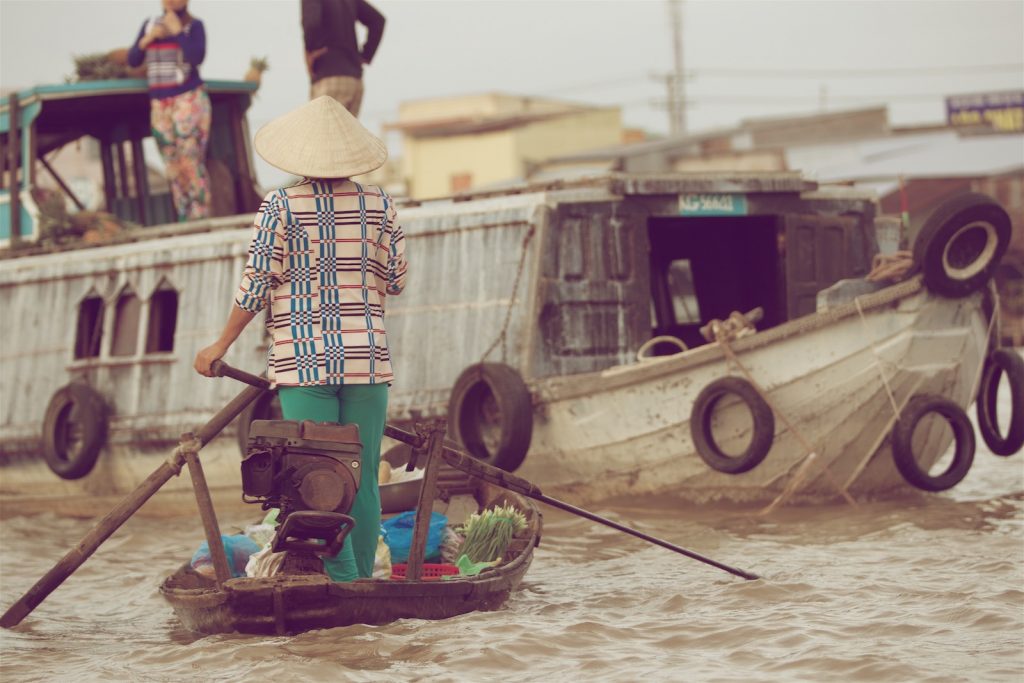
Best time
Experiencing the floating markets is reserved for early risers. At least if you want full value for money. The markets start around 5 o’clock in the morning and continue until noon. As early as around 7 o’clock, a significant change of boats begins to take place, as part of the locals sail home, and the tourists begin to flock. So, it certainly pays off to rise early.
Book a boat trip
We recommend that you book a boat trip where you get around to both floating markets. In addition, you should choose a trip that takes place with one of the small wooden boats with a maximum of 6-8 people. This makes the trip both cosier and more authentic, as getting up close to the trading boats is easier.
Also check if the cruise goes through the small canals (it’s a must, if you ask us), and if so, what are the stops. For example, we had not been informed that we e.g. had to pass a snake farm, which we could have done without. On the other hand, it was a pleasant experience as we visited several orchards, walked along the water, and ended at a small restaurant, where we could buy something to eat and drink.
Pack a bag
It can be cold to sail in the morning when the sun is not yet warm. Therefore, bring a jacket and possibly a light scarf with you – as well as sunscreen and sunglasses for later in the day. Also, bring some cash if you want to buy something at the market and the restaurant. Bring small bills.
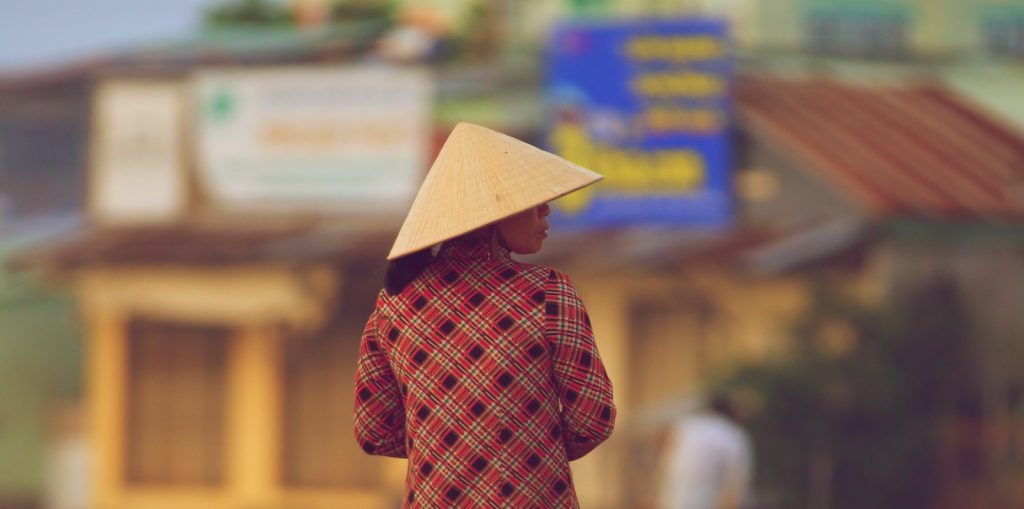
Good to know
It is completely voluntary, but it is considered good practice to buy something to drink and eat for the helmsman of your boat and tip when the trip is over.
USEFUL LINKS
• Travel Sense Asia: Info on floating markets at Can Tho
• A World to Explore: Danish travel blog about visits to Cai Rang and Phong Dien

